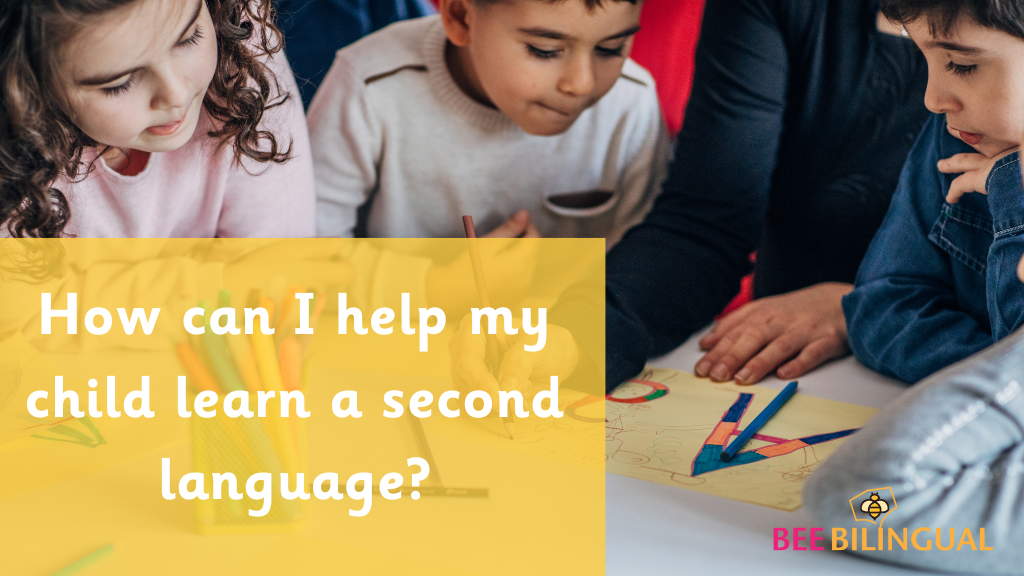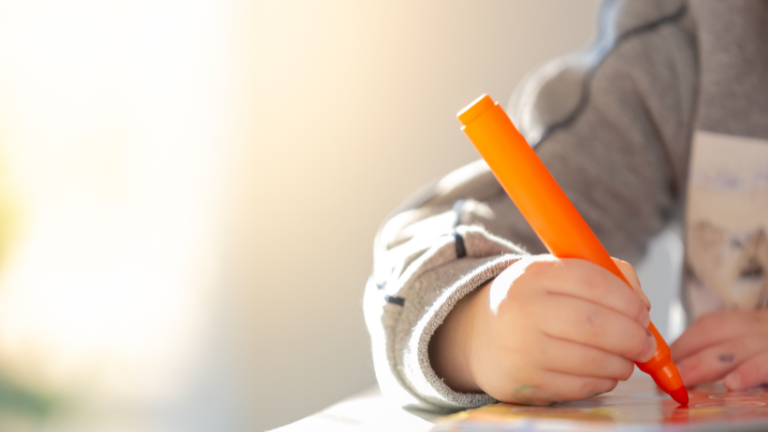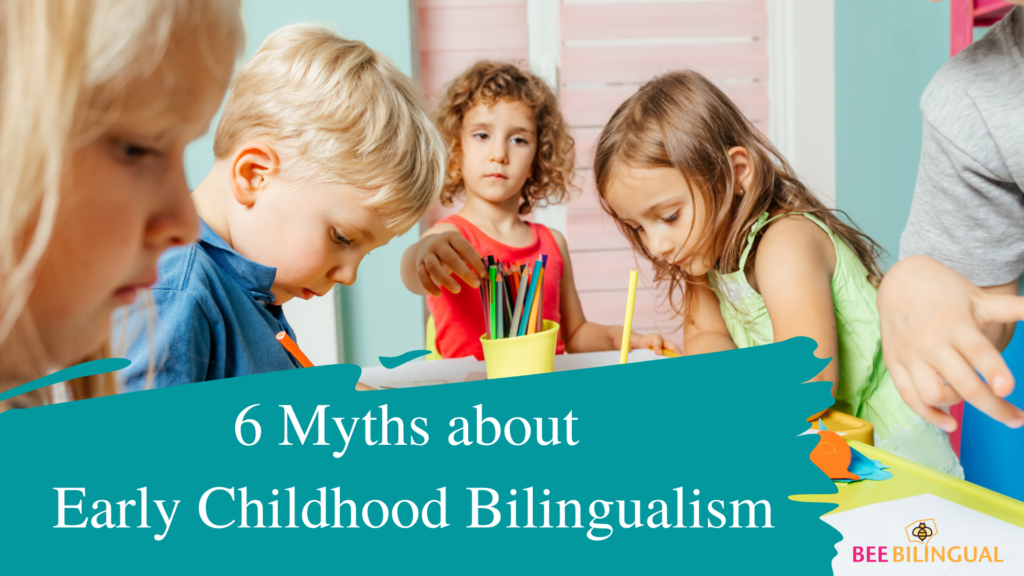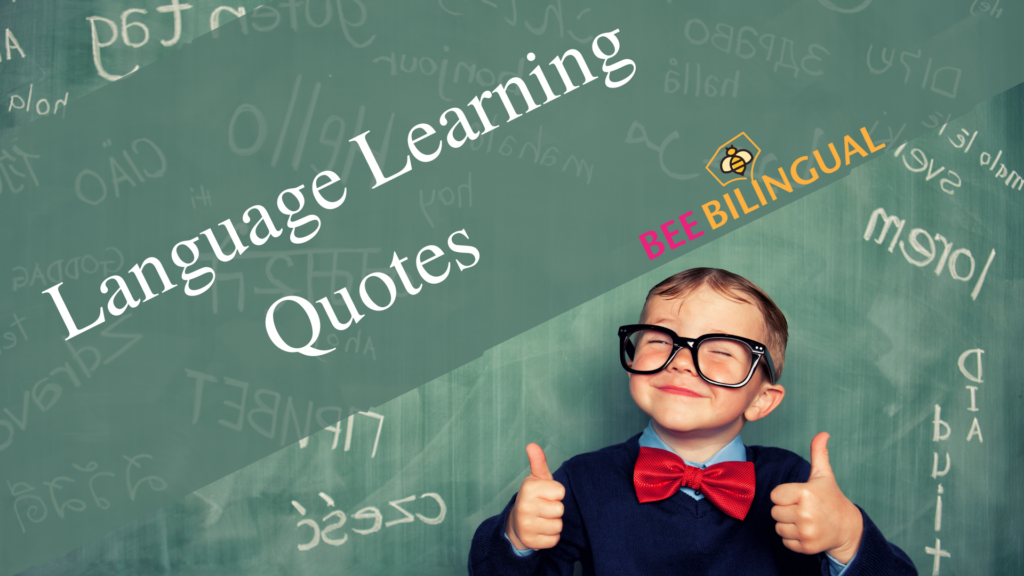Perhaps you have moved abroad, your partner speaks a different language, or you would just like to give your child the opportunity to learn another language and (through language learning) also help them to get to know a different culture. Of course, there are many ways to help your child learn a second language. From extra language classes to language games and apps, there are lots of options. We made a list with a few easy-to-implement tips that can help you and your child in their language learning journey. To support you in your bilingual home education, we have also created this Free Bilingualism Checklist that will provide you with a lot of useful information.
How to support a child’s second language learning
1. A language-rich environment helps language learning
A rich second-language environment is crucial for your bilingual learner. Books, for example, are incredibly important and useful, especially if you can speak the language yourself. I’ve written a few books for young bilingual-and even multilingual language learners; I even use them in my own lessons.
A second language library is a great way to motivate your kid to learn and practise their new language. Workbooks, such as my Bee German: German for Children Volume 1 or my Bilingual Coloring Book German and English, make learning enjoyable and help children expand their vocabulary.
In addition to books, use real-life materials such as newspapers and magazines in the language you both speak. These can be used for interesting conversations or puzzles. You could also play some games together (card or board games) and teach them a few words of the second language they are learning. Labels are also a fantastic tool; simply label your furniture and everyday objects with the words in both languages.
2. Incorporate language learning into everyday activities
Make use of everyday opportunities to help your child learn the new language. During meal times, for example, you can practise counting peas, potatoes, or whatever else you can find in the second language, or simply talk about food. Or how about a Bake-Off competition in the target language? When going out with your child, you can point out items in the street and name them in both languages. Even when you read a picture book with your child, you can discuss the illustrations and name things in both languages.
Additionally, you can create fun activities and use games and puzzles for language learning, as well as music and age-appropriate TV shows or YouTube videos. Channels, like mine (BeeGermanLearning) feature a lot of videos that are specifically made for bilingual kids. Arts and craft activities are something I have always used in my language lessons; it’s a great way to help kids express themselves and support their language learning. Ask them about the colours they are using, what they are doing, and why. This creates a language-rich and imaginative conversation that helps your bilingual learners remember new words and sentence structures.
Of course, as mentioned above, apps and websites that are specially made for kids also often provide fantastic opportunities to help your kids learn a new language, but they shouldn’t be the only tools used.
3. Practice consistently
Consistent daily language practise is essential for your child’s success in learning a second language. Having a routine and making the new language part of it can be really helpful, so make sure to set aside some time every day to do something related to the target language. It doesn’t have to be complicated or extra challenging; simple exercises and fun activities keep children’s interest alive. In general, fun should be one of the main objectives for you and your child. Language learning shouldn’t be a tedious or horrible daily task. It should be enjoyable and interesting.
4. Find a teacher who is a native speaker
I’ve been teaching languages to children for a very long time, and I absolutely love it; nothing is more rewarding than seeing my students progress and become confident speakers of a new language. Of course, you can teach your child the language yourself, but it’s also beneficial to find a teacher who is a native speaker, particularly for younger students. Native speakers can provide excellent pronunciation tips and an authentic language learning experience with language games and play activities.
Making mistakes is part of language learning
Try to practise patience and understanding. Mistakes are actually a great way for children to learn, so don’t worry when they make them. Encouragement, support, and (yes, I repeat myself) fun are keys here.
On a final note, celebrate the milestones and don’t worry about the smaller steps. Learning a new language takes time, so be patient with your bilingual learner. Both of you should enjoy the language learning experience!



